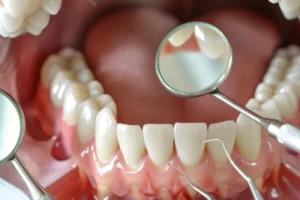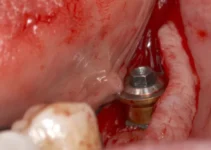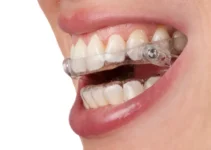Understanding innovative treatments for the reconstruction of tooth enamel is essential for those looking to restore their dental health and enhance the durability of their teeth. These treatments often utilize advanced materials and techniques to mimic natural enamel and improve tooth function. From the application of bioactive glass to the use of nanotechnology-enhanced solutions, this article delves into how these state-of-the-art approaches can benefit individuals with enamel degradation, offering not just aesthetic improvements but also significant health advantages. By exploring various treatment options, patients can make informed decisions about protecting and rejuvenating their smiles.
Overview of Tooth Enamel and Its Importance
What is Tooth Enamel?
Tooth enamel is the thin, outer layer of the tooth that serves as a hard shell. It is the hardest and most mineralized substance in the human body, made up of hydroxyapatite, a crystalline calcium phosphate. Despite its durability, enamel can still be subject to wear and damage.
Enamel covers the visible part of the tooth and plays a crucial role in protecting the inner layers of the teeth from decay and damage. It has no living cells, meaning once it wears away, the body does not regenerate it.
Understanding the composition and structure of enamel can provide insights into how to maintain it and what happens when it is compromised. Researchers continuously study enamel to develop better preventive and restorative dental treatments.
Functions of Tooth Enamel
The primary function of tooth enamel is to protect the inner layers of the teeth, including the dentin and pulp. It acts as the first line of defense against physical damage from chewing and biting, as well as chemical damage from acidic foods and beverages. Without enamel, the softer inner structures of the tooth would be extremely vulnerable to decay and injury.
Tooth enamel also plays a key role in maintaining the white, shiny appearance of the teeth. As it wears down, the underlying dentin, which is more yellow and less shiny, can become exposed. This can lead to aesthetic concerns along with functional issues.
Additionally, enamel insulates the teeth from potentially painful temperature changes caused by hot or cold foods and drinks. Its ability to endure a wide range of substances and forces is a testament to its importance in overall oral health.
Causes of Enamel Erosion
Enamel erosion can occur due to several factors, often leading to increased sensitivity and a higher risk for cavities. Some of the most common causes of enamel erosion include:
- Dietary acids: Foods and drinks high in acid, such as citrus fruits, soda, and wine, can wear down the enamel over time.
- Bruxism: The condition where individuals grind their teeth, often during sleep, can cause significant enamel wear.
- Gastroesophageal reflux disease (GERD): This condition causes stomach acids to flow back into the mouth, leading to enamel erosion.
Poor oral hygiene can also exacerbate the effects of these factors. Regular brushing and flossing, along with routine dental check-ups, are essential in preventing enamel erosion. In addition, certain medications and genetic factors can influence the rate at which enamel erodes. It is important to recognize and address these causes early to minimize long-term damage and maintain overall oral health.
If you found this article informative, be sure to check out our other articles on dental health and maintenance to keep your smile bright and healthy!
Traditional vs. Innovative Treatments for Enamel Reconstruction
Overview of Traditional Treatments
Traditional treatments for enamel reconstruction have primarily focused on restorative approaches. These include the use of fillings, crowns, and veneers to repair damaged or decayed tooth enamel. Dentists often use materials like amalgam, composite resins, and porcelain to restore teeth to their natural form and function. Additionally, fluoride treatments have been a longstanding method for fortifying enamel and preventing further degradation.
In the early stages of enamel erosion or decay, fluoride varnishes and gels are commonly applied to the teeth. These treatments help to remineralize the enamel, making it more resistant to acid attacks from plaque bacteria and sugars in the mouth. For more advanced cases, dental bonding using composite resins can be employed to fill in cavities and chips, effectively restoring the tooth’s integrity and appearance.
Limitations of Traditional Methods
While traditional methods have been effective to a certain extent, they do come with limitations. One of the primary drawbacks is the invasiveness of procedures like fillings and crowns, which often require the removal of healthy tooth structure. This can weaken the tooth over time and may necessitate additional restorative work in the future.
Another significant limitation is the durability of traditional materials. Amalgam fillings, for example, can last for many years but may eventually crack or leak, allowing bacteria to enter and cause further decay. Composite resins, while aesthetically pleasing, are not as durable as natural enamel and can wear down or discolor over time.
Moreover, traditional treatments often don’t address the underlying causes of enamel erosion, such as dietary habits or acid reflux. They primarily focus on symptom management rather than prevention, which can lead to recurring dental issues for many patients.
Introduction to Innovative Treatments
Recent advances in dental technology have led to the development of more innovative treatments for enamel reconstruction. One of the most promising approaches is the use of biomimetic materials that closely mimic the properties of natural enamel. These materials are designed to integrate seamlessly with the tooth, providing both strength and durability without the need for extensive removal of healthy tooth structure.
Another groundbreaking innovation is regenerative dentistry, which aims to stimulate the body’s natural healing processes to regenerate lost or damaged enamel. Techniques such as stem cell therapy and growth factor application are being explored to promote the formation of new enamel tissue. This approach not only repairs the tooth but also addresses the root causes of enamel degradation.
Additionally, laser dentistry is making strides in the field of enamel reconstruction. Lasers can be used to remove decayed tissue more precisely and with less discomfort compared to traditional drills. They also promote faster healing and reduced risk of infection, making them a popular choice for patients seeking less invasive treatment options.
As these innovative treatments continue to evolve, they offer promising alternatives to traditional methods, potentially revolutionizing the way we approach enamel reconstruction and overall dental health. For more in-depth information on these emerging technologies, explore our other articles on cutting-edge dental treatments.
Latest Innovations in Enamel Reconstruction
The advancement in dental science has led to significant innovations in enamel reconstruction. Enamel, the outermost layer of the tooth, is essential for protecting the underlying dentin and pulp. Over time, enamel can be worn down due to various factors including diet, oral hygiene practices, and even genetics. Fortunately, new technologies and methods are being developed to effectively restore and reconstruct enamel, enhancing dental health and longevity.
In this article, we will explore the latest innovations in enamel reconstruction, focusing on biomimetic approaches, the role of nanotechnology, and future directions in the field. These advancements not only aim to restore the functional aspects of enamel but also strive to closely replicate its natural properties.
Biomimetic Approaches
One of the most promising areas in enamel reconstruction is the use of biomimetic approaches, which involve mimicking the natural processes and structures of enamel formation. Biomimetics aims to recreate the complex hierarchical structure of enamel, which is composed of tightly packed hydroxyapatite crystals. By understanding and replicating these natural processes, researchers can develop materials that closely mimic the properties of natural enamel.
For instance, researchers have developed synthetic materials that can induce the formation of hydroxyapatite crystals similar to those found in natural enamel. These materials are often combined with protein-based matrices that guide the mineralization process, ensuring that the newly formed enamel exhibits the same structural characteristics as its natural counterpart.
Additionally, biomimetic approaches often utilize peptides and other bioactive molecules that can stimulate the growth of enamel-like structures. These molecules can enhance the regeneration process, promoting the deposition of new mineral layers that replicate the hardness and resilience of natural enamel.
Nanotechnology in Enamel Repair
Nanotechnology has revolutionized many fields, including dentistry. In the context of enamel reconstruction, nanotechnology offers the ability to manipulate materials at the molecular and atomic levels, leading to highly precise and effective repair techniques. Nano-sized particles can be engineered to interact with dental tissues in specific ways, promoting the regeneration of enamel with exceptional accuracy. One application of nanotechnology in enamel repair is the use of nanoparticles to deliver bioactive agents directly to the affected areas. These nanoparticles can be designed to release minerals, such as calcium and phosphate, in a controlled manner, facilitating the remineralization of damaged enamel. This targeted delivery system ensures that the minerals are deposited exactly where they are needed, enhancing the effectiveness of the treatment.
Nanotechnology also plays a crucial role in the development of advanced dental adhesives that can bond strongly to enamel. These adhesives often contain nanoparticles that enhance their mechanical properties and ensure a durable bond. This not only improves the longevity of dental restorations but also helps protect the underlying tooth structure from further damage.
Future Directions in Enamel Reconstruction
As research continues to advance, the future of enamel reconstruction looks promising. Scientists are exploring new materials and methods that hold the potential to revolutionize the way we approach dental care. One emerging area is the use of stem cell therapy to regenerate enamel. By harnessing the regenerative capabilities of stem cells, researchers hope to develop treatments that can restore enamel to its original state without the need for synthetic materials.
Another exciting direction is the integration of smart materials that can respond to changes in the oral environment. These materials could potentially release therapeutic agents in response to acidic conditions or other factors that contribute to enamel erosion. Such innovations could provide a dynamic and responsive approach to enamel preservation and restoration.
Lastly, advancements in digital dentistry and 3D printing technology are paving the way for highly customized enamel reconstruction solutions. By creating precise digital models of a patient’s teeth, dentists can design and fabricate tailored restorations that perfectly match the natural anatomy of the patient. This personalized approach ensures optimal functionality and aesthetics.
Stay tuned for more exciting developments in dental science and enamel reconstruction by exploring our other articles. Discover how the latest research and technologies are shaping the future of dental health and well-being.
Common Questions About Restoring Tooth Enamel
Restoring tooth enamel is crucial for dental health. Here are some frequently asked questions regarding the latest treatments in enamel reconstruction.
What are the latest innovations in the reconstruction of tooth enamel?
The field of tooth enamel reconstruction has seen significant advancements with the development of biomimetic materials that mimic the natural properties of enamel. Treatments now utilize advanced ceramics and nanocomposite materials that can effectively restore the tooth’s original strength and appearance.
How do these new enamel reconstruction technologies work?
These innovative treatments involve the application of biomimetic materials directly to the damaged areas of the teeth. These materials bond with the existing tooth structure, promoting remineralization and providing a durable, aesthetically pleasing surface that functions like natural enamel.

My name is Salman Kapa, a 73-year-old expert in bone regeneration and dental implantology. With decades of experience in the field, I am dedicated to advancing our understanding of oral health and hygiene. Through my research and writing, I aim to contribute to the development of innovative solutions in dental care.




